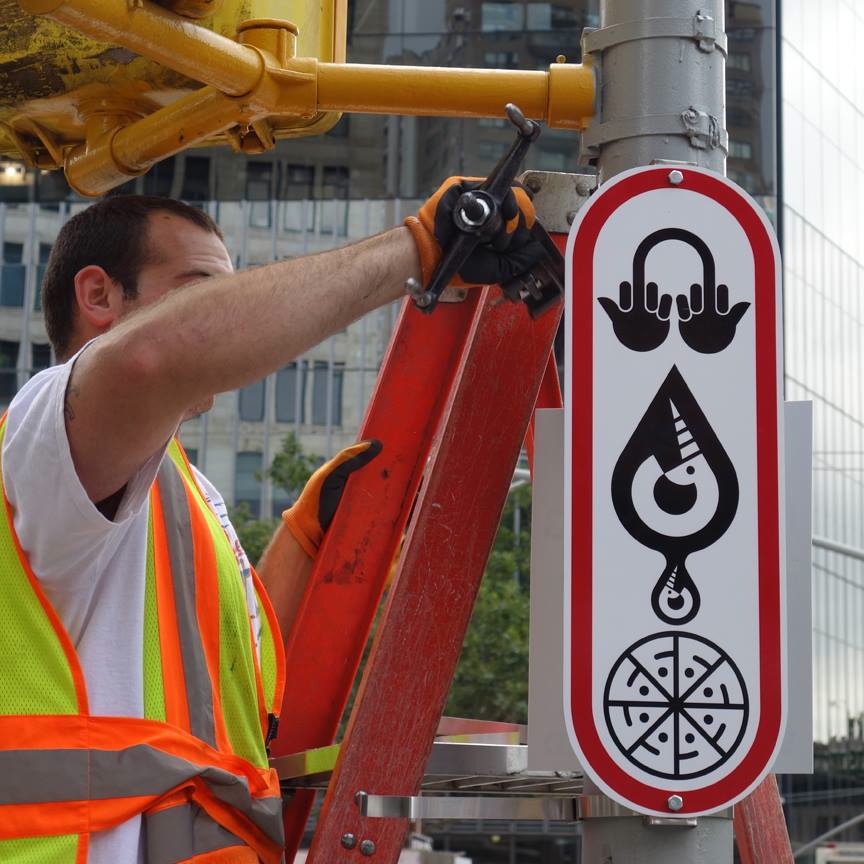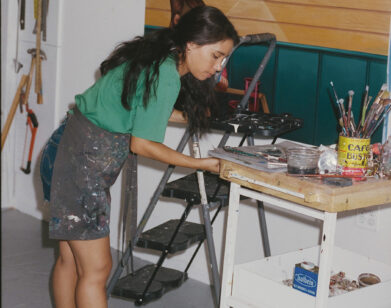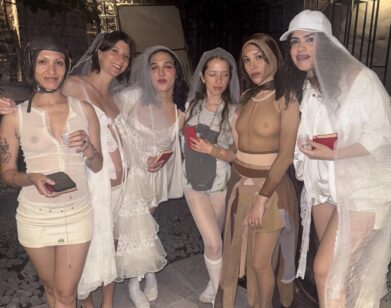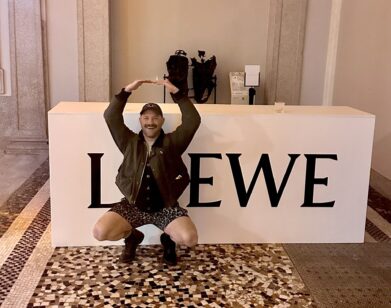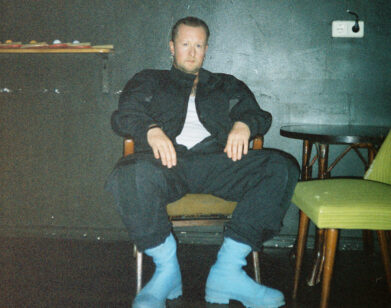Ryan McGinness: Street Art Heist
The Goldfinch, last year’s Pulitzer Prize-winning novel by Donna Tartt, about a young man’s attachment to a treasured museum work, reversal of fortune, and subsequent journey of self-discovery, makes an interesting case for art imitating life. Or, as it happened last week, life imitating art imitating life.
Last Monday morning, two young women craned their necks and observed as a worker in steel-toed boots and a fluorescent vest installed a new metal sign next to a blinking traffic light on Park Avenue. At first, there was no reason to think it wasn’t just another “Do Not Honk—$250 Fine” warning. At second glance, however, the sign revealed itself to be a bit of powerful tongue-in-cheek street art by contemporary artist Ryan McGinness.
McGinness partnered with New York’s Department of Transportation to deploy his subversive and occasionally “graphically surreal or absurd” drawings on 50 eight-by-24-inch oblong aluminum “canvases” around the city. Many of his original sketches for Signs, as the series is known, make geometrically perfect vector images, and appear in McGinness’ Sketchbook Selections 2000-2012, published last year by Ginko Press. The enigmatic symbols, presented in a traffic-style trifecta, are like a Rorschach test, and span themes of science, non-linear mindscapes, online dating, baby unicorns, and wealth and excess, with nods to Brancusi and Rodin.
With their tightly controlled use of bold red-white-and-black schemes, the signs are organic to their environs, yet so covetable nearly all disappeared in less than a week. “I assume they were stolen out of desire, and not as a means to protect the public from something they shouldn’t be seeing,” McGinness said.
He first noticed a number of his works missing near his SoHo studio, and was “annoyed, yet mildly amused”—until he discovered an aggressive campaign was underway to dismount his glowing signs en masse. Confessing a childhood fascination with hijacking power, the artist says he used the iconography of traffic signage to “subvert power, taking the tools of the state to express more personal or poetic notions.” In a culture obsessed with aesthetic appropriation, who’s borrowing from whom?

